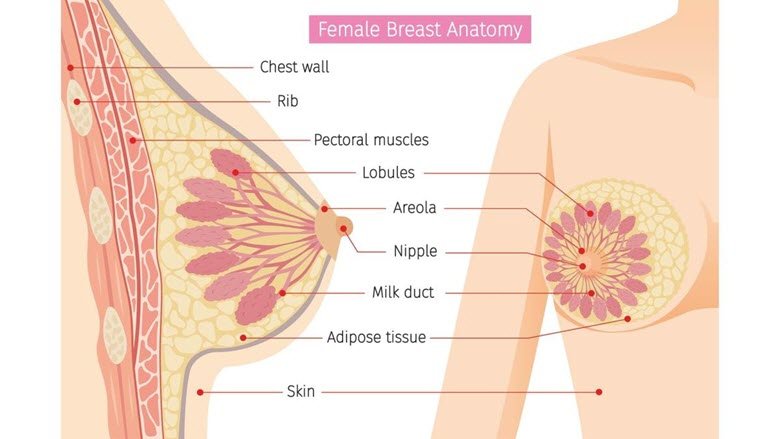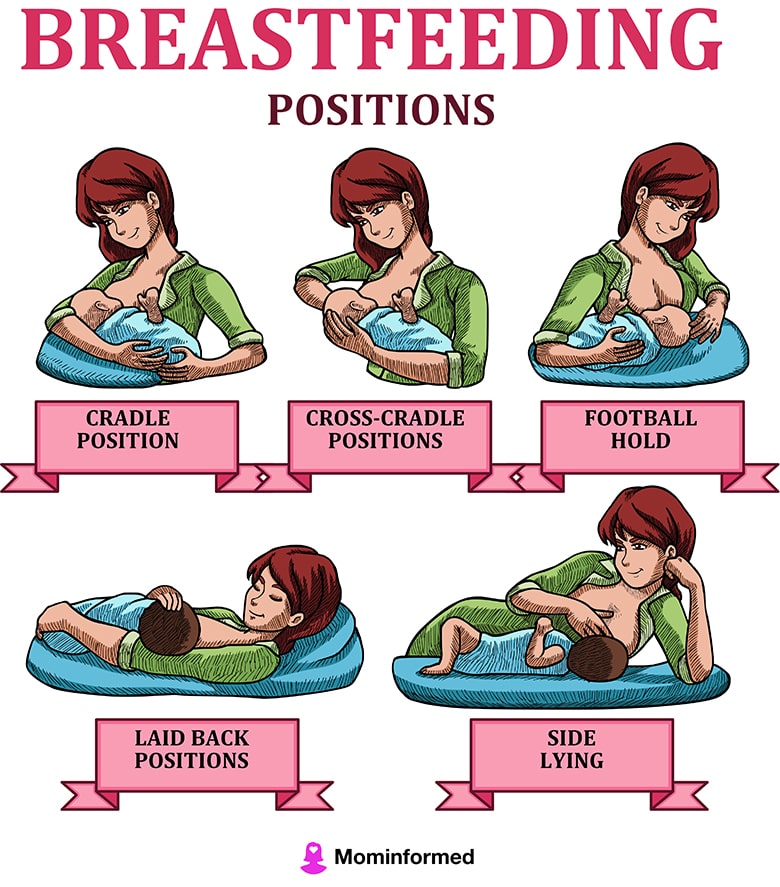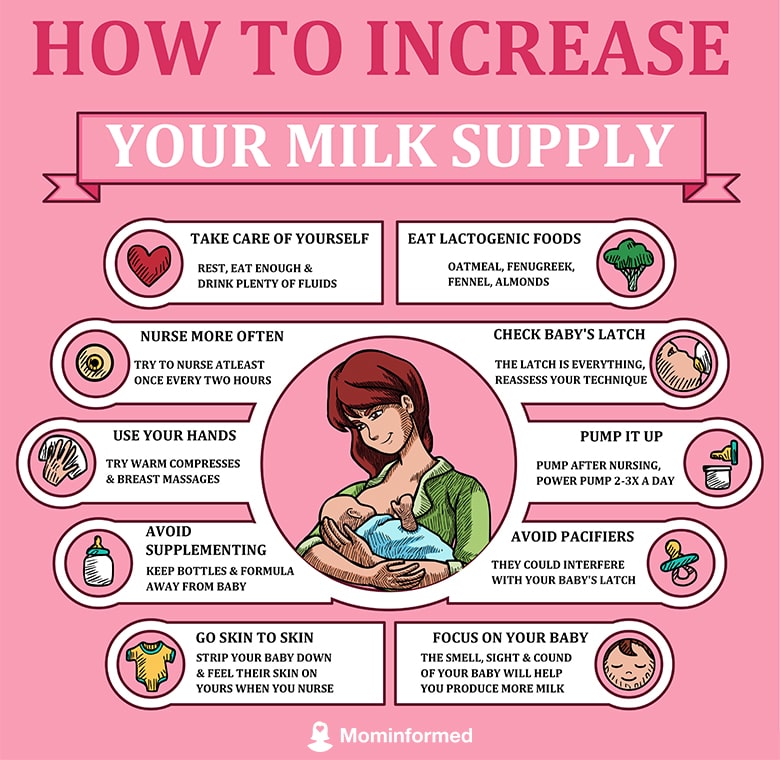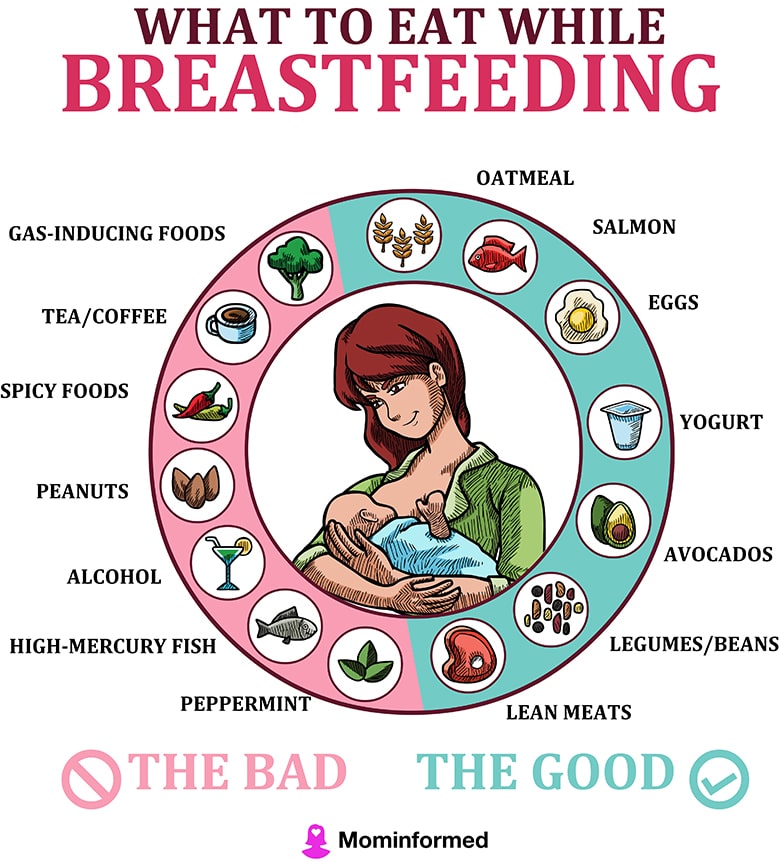You provided shelter and sustenance for your little bundle of joy for nine (let’s be honest, ten) whole months. You read all of the books; you took a class or two. You took care of the body that was carrying this new life, and all along, you knew that when the time came, you would continue to feed her from your own body as long as possible.
But what happens when breastfeeding is difficult due to low levels? You might have found yourself scouring any and all sources for an answer to how to increase breast milk. Take a deep breath and remember you are not alone.
I cannot tell you how many mothers, myself included, have worried about whether their baby was getting enough milk and wondered how to increase breast milk levels. Fortunately, there are so many answers out there, since each mama and baby are different. Rest assured, you’re doing just fine.
I’ve written this guide to help all the mothers out there when they need it most. I know I had a hard time finding all the information I wanted, in one place. It was scattered everywhere and was really hard to get what I felt were accurate and informed answers. I really do hope this helps you. Please contact me if we’re missing anything or if you have any tips to add, thanks – now enjoy!
View in gallery
How Does Milk Production Work?
Your breasts start transforming during pregnancy in order to prepare to feed your baby when she arrives. Breast changes are one of the first signs of pregnancy for most women.
On the outside, you probably noticed your areola, the area around your nipple, growing larger and darker early on in pregnancy, which lets your baby know where to latch on (aren’t our bodies just incredible?!).
On the inside, alveoli, which are responsible for converting proteins and other nutrients from your bloodstream into milk, increase, and colostrum, which is the first milk you produce for your little one, begins to be produced by the end of the second trimester.
View in gallery
Breast growth and milk production are controlled by hormones.
Estrogen and progesterone, two hormones you are undoubtedly familiar with by now, are in charge of increasing the milk ducts inside your breasts as well as the regulation of milk production – breast milk production is largely dependent upon the placenta being delivered since it triggers a decrease in these hormones.
Once you begin to breastfeed, the hormone prolactin notifies your body when it is time to restore milk supplies. When this hormone is too low, breast milk production decreases. Finally, oxytocin releases when your baby is breastfeeding, triggering letdown, which occurs when your breast milk is released through the twenty or so openings in your nipple.
Related Article: Is It Bad to Squeeze Colostrum Out?
Breastfeeding Techniques & Positions
There are many different ways to breastfeed your baby. Not all styles work for everyone, so it’s important to try different things to find what works best for you. Having success while breastfeeding doesn’t always come naturally. It can take some research and a lot of practice. Just about every new mom and baby struggle to find the proper positioning during those first attempts. Finding the proper position is essential to help your baby latch properly and to avoid soreness of the nipples. It may take some trial and error but you’ll find what works best for you and turn into a professional in no time. Check out the most common breastfeeding positions below.
View in gallery
Best Breastfeeding Position for Gassy Baby
Pediatricians generally recommend that you burp your baby while in a seated position and then focus on feeding in an upright or semi-upright position. While they are nursing sitting upwards, the baby can control the milk flow better and help avoid gas. Also, check the latch and make sure baby is not gulping down lots of air.
Best Breastfeeding Position for C-Section
Most mothers find the side lying position to be the most comfortable after having a c-section. Another popular position after a c-section is the football hold. Sit somewhat upright and place your baby on a pillow between your arm and your side. Use your hand to cup the underside of her head.
Is Your Milk Supply Low?
After you deliver the placenta, your hormones are typically triggered into engaging in milk production. For the first few days after delivery, your little one’s diet will consist of colostrum.
Your body only has about three days’ worth of colostrum, the thick substance that contains crucial nutrients and antibodies that are meant to both sustain and protect your brand new baby.
After that 48-72-hour time period has elapsed your body should produce regular breast milk. This breast milk will begin to resemble more of what you had probably expected; it should be an opaque white or clear white and flow more smoothly than colostrum.
Sometimes, however, breast milk supply can be on the lower side, and you might worry that your body does not seem to be producing sufficient nutrition for your sweet baby.
Signs your baby isn’t getting enough milk
There are several signs you can look for if you suspect your baby may not be getting enough breastmilk. As you’ll find out very quickly, babies have a way of letting us know when something isn’t right – often by crying. But there are other signs that might be harder to notice.
- Weight decrease or a lack of weight gain
Most babies lose a little weight immediately after birth, and that minimal loss is completely normal in most cases. However, if your little one continues to decrease in weight steadily or stagnates in weight gain altogether, it is often a sign that she is not receiving sufficient nutrition. Babies tend to nurse a lot in the days immediately after entering the world, and that doesn’t mean they are going hungry; they’re just used to constant feedings from the placenta. But again, if there isn’t a steady increase in weight, it is often a sign of low breast milk levels.
- Insufficient diapers
Newborns poop all the time. A well-nourished newborn baby should be pooping between three to four times per day, with that number dropping down to one to two poops a day over the next three months. Newborns should also have wet diapers around six times a day. These numbers may vary, but if you’re finding that your little one isn’t pooping regularly or is having fewer than five wet diapers a day, it’s typically a sign that there is insufficient nourishment.
- Dehydration
The thought of a dehydrated baby is definitely a worrying one, so you’ll want to look out for the following signs. Baby’s urine should be clear or very light during each change, so if you notice darker urine, it could be a sign of dehydration. More intense symptoms include jaundice (yellowing eyes) and dry mouth. These symptoms are typically coupled with a very uncomfortable and therefore fussy baby.
It is of the utmost importance that if you notice any of these signs, you report them to your baby’s health care provider immediately. Babies need sufficient nutrition during the first few months of their lives in order to establish a strong immune system and to continue developing properly.
Potential causes of low milk supply
If you find yourself seeing any of the above symptoms, first, just know that you are absolutely not alone, and it is not your fault. There are many reasons that you might be experiencing low milk supply, and many of these causes have simple remedies. The following are some of the more common reasons that you might find yourself experiencing low milk supply:
- Medications or Supplements
Certain medications such as hormonal birth control can have a negative impact on your milk supply. You should consult with your doctor while you are still in the hospital before returning to your prior birth control routine. Other medications such as pseudoephedrine (decongestants), methergine, which is often prescribed due to extreme uterine bleeding after giving birth, and bromocriptine, which is a medication that actually stops the production of prolactin, can also reduce the amount of milk your body produces. Furthermore, herbal remedies that ingredients such as parsley, peppermint, or sage have been shown to reduce milk levels.
- Medical conditions
Conditions such as mammary hypoplasia, which causes insufficient glandular tissue, polycystic ovarian syndrome, diabetes, thyroid or other hormonal disorders have been proven to cause lower milk supplies in new mothers. If you have one of these medical conditions, the condition itself or the medication prescribed for treating it might interfere with your body’s ability to breastfeed. If this is the case, remember that formula can be used to nourish your baby without any shame. It is crucial that you maintain your own health for the sake of your baby. Additionally, if your baby has a tongue-tie, which is a very common anatomical irregularity, it can be difficult for her to get a good latch.
- Trauma
If you have experienced any recent physical distress outside of that which comes from a typical, healthy pregnancy, your body might have difficulty producing adequate levels of breast milk. Certain types of trauma, specifically from breast surgeries, blood loss during birth, or placental abruption have been known to cause a decreased supply of milk.
- Common Feeding Mistakes
One cause of low milk supply is incredibly easy to remedy, and that is making normal feeding errors. For example, neglecting to get on a feeding schedule including nighttime feedings can have an immediate negative effect on milk supply. Additionally, supplementing with formula too soon, or overuse of a pacifier can also decrease levels of breast milk. It’s all based on supply and demand with breastfeeding. The more you feed, the more supply you’ll have.
When should I get help and who do I ask?
If you suspect you have a low milk supply, it is important that you seek medical help as soon as possible. Doing so can ensure that your baby is well nourished and can also help prevent a further decrease in milk levels. Fortunately, there are lactation consultants available at most hospitals who are typically on hand immediately after birth and easy to get in contact with in the days, weeks, and months following the arrival of your new baby.
Lactation consultants are usually covered by insurance and meet with mothers on a one-on-one basis like any medical professional. However, there are group classes put on by these lactation professionals, as well, which just goes to show how common and understood the issue of low milk supply really is.
How to Increase Your Milk Supply
If you have been diagnosed with having a low milk supply, your doctor or lactation consultant will undoubtedly have a good idea of what specific solution is right for you. If you haven’t been diagnosed but suspect you have a low supply, here is a list of things you can try to increase your milk supply.
View in gallery
- Lifestyle changes
Before you try anything else, making some minor lifestyle changes can have a big impact on your milk supply. As with any healthy pregnancy, you want to ensure you avoid too much caffeine and any level of nicotine, as both can act as roadblocks to your breastfeeding journey (and neither are particularly healthy or useful for your body!). Increasing activities that bring you joy, such as spending time with your partner, your friends, or your family, can be a great strategy to reduce stress. Trying to get more rest in between feedings and a good amount of sleep, although a seemingly difficult task right now, can be paramount in keeping stress at bay and staying calm.
- Avoid Beer and Alcohol
Now, this might not be what you want to hear after abstaining for nine months but avoiding beer and other alcoholic beverages are crucial to increasing milk levels.
- Drink Lots of Water
It’s very important to stay well hydrated while breastfeeding. You should drink around 96 ounces of water a day, just 32 ounces more than the typical suggested amount. Remember that your body is on overdrive right now, and it takes a lot to make milk and sustain a little one, so hydration is key!
- Improve Your Diet
Remember when you were eating for two and adding an extra 100-200 calories a day? Breastfeeding requires an even greater caloric intake than growing that precious baby, somewhere between three hundred and five hundred extra calories. The process of converting your proteins and blood sugar into breast milk requires a lot of energy, so staying fueled is important if you want to be able to produce breast milk. Your body will not have what it needs to make milk if you don’t supply it with enough calories. Be sure to follow a healthy, balanced diet by eating enough whole grains, fresh fruit, and green vegetables while you are breastfeeding.
- Eat Foods that Increase Breast Milk
There are many foods that are thought to increase breast milk. Foods such as oats, barley, and millet are excellent supplements for breast milk. More exotic foods such as seaweed, papaya, and sesame seeds have also been shown to help with milk production. Almonds can be a good way to meet that extra caloric requirement, as are lactation cookies. There is a wealth of lactation increasing recipes you can also work into your diet that will help you increase calories and milk levels. Here are some suggestions on what to eat and what not to eat while breastfeeding.
View in gallery
- Supplement milk production with herbs
While some herbs are definitely off-limits during pregnancy and when trying to breastfeed, there are a select few herbs that can actually have the desired impact on your breast milk supply. Some of these herbs include alfalfa, anise, blessed thistle, brewer’s yeast, burdock, Chaste Berry, fennel, fenugreek, flax, goats rue, marshmallow root, milk thistle, nettle leaf, Shatavari, and soapwort. Mothers milk tea and Red raspberry leaf tea are two delicious concoctions that are safe to use when breastfeeding, as well.
- Things to avoid
When trying to breastfeed, there are certain foods and medications that are good to keep off limits. Peppermint, sage, parsley, oregano, jasmine, and yarrow can cause a decrease in breast milk. Additionally, certain antihistamines, decongestants, and diuretics can also interfere with breast milk production. Finally, although you might be missing your pre-baby body, now is absolutely not the time to begin dieting, so definitely steer clear of weight loss medications, which can sometimes affect the production of breast milk.
- Improve the quality of feedings
Many issues can arise during breastfeeding that may lead to lower milk supply. Working to get a “good latch” is going to be one of the best things you can do. To start out, try doing breast compressions during feeding to help improve your baby’s attachment. Nursing with your baby up against your breast with exposed skin (both for you and your baby) has been shown to increase hormone release, which helps accomplish a more productive feeding. You can also try to pump five to ten minutes after feeding to stimulate milk production, as your body will be under the impression that it needs to produce more milk. Also, remember that just nursing more often will increase the demand for your milk and your body will answer by increasing the supply.
Related Article: Spectra S1 vs S2 – Which Breast Pump is Best?
How to get a Good Latch:
How to Master Breast Compressions:
- Massage Your Breasts
Start by implementing breast massages into your routine. Doing these massages can decrease the risk of mastitis and can also encourage milk production.
- Use Youtube for Tips from Experts
There are dozens of very helpful videos out there to help you perfect your methods. Answers to the most common questions and demonstrations are easily found on the platform. We picked a couple of our favorites that offer really great advice for increasing your breastmilk.
How to Increase Your Breast Milk by Mama Natural:
Increasing Your Milk Supply by the Global Health Media Project:
Summary
After pregnancy itself, breastfeeding is one of the most incredible and rewarding phenomena our bodies are capable of experiencing. Breastfeeding creates a crucial bond between mother and child, and it provides the most wholesome and beneficial nutrition possible for our precious babies.
Sometimes, though, breastfeeding becomes difficult or seemingly impossible. There are so many reasons that your breastfeeding journey might be impeded, but remember that most of these roadblocks are temporary and come with actionable solutions that can help you overcome what might feel like overwhelming problems. Always remember that your body is designed to create, carry, and sustain that little baby. It may be difficult to find yourself unable to breastfeed, but there is often a solution to the problem and you should never give up on your breastfeeding journey. The moment you think you might be experiencing low breast milk supplies, reach out to friends, families, and above all, a lactation consultant who can point you in the right direction. You’ve got this, mama!






